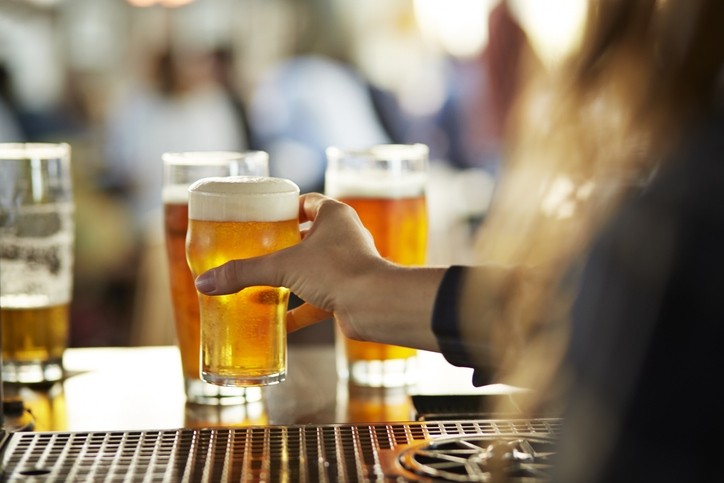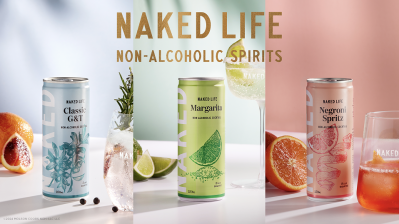How is 2024 shaping up for the US craft beer industry?

The US craft beer industry once enjoyed meteoric growth rates: but the picture has been less rosy over the last few years. In 2023, the industry produced 23.4 million barrels of beer, a decline of 1% from 2022.
However, this volume loss has to be taken in context of the overall beer industry, which declined 5.1%: meaning craft beer effectively increased its market share to 13.3%.
So how is the picture shaping up for 2024?
The good news and the bad news
Craft beer enjoyed impressive growth throughout the 90s and 2000s (at times boasting double-digit growth rates).
But by 2019 it was already turning into a more mature market with steadier growth rates (4% volume growth in 2019, against a backdrop of industry declines of 2%).
The pandemic, however, hit the sector hard.
Being small businesses by definition, craft brewers were among the most vulnerable companies.
Many rely on taprooms and the on-trade, which had to close during the peak of the pandemic (as a result, craft beer production dropped 9% in 2020.)
The industry largely recovered the following year: only to find itself facing a new set of hurdles across 2021 and 2022: such as rising operating and material costs, supply chain challenges, and increased competition.
The 2024 mid-year survey shows that the industry still faces considerable challenges. There has been a continued small decline by volume in the market: with the Brewers Association estimating 2% declines in craft beer volume compared to 2023.
Craft beer stats
Number of craft breweries | Production growth (volume) | Craft beer market share | Overall beer market growth | ||
2019 | 8,419 | 4% | 13.6% | -2% | Maturing market |
2020 | 8,921 | -9% | 12.3% | -3% | Pandemic hit |
2021 | 9,210 | 8% | 13.1% | 1% | Pandemic rebound |
2022 | 9,675 | -2% | 13.2% | -3% | Normalization |
2023 | 9,761 | -1% | 13.6% | -5% | Increased market share |
Brewers have to navigate a volatile economy: while the cost of raw materials has moderated, inflation and prices remained key concerns for both brewery operations and customers.
Competition is another key issue: with drinks such as RTD cocktails posing a key competitor to beer, particularly when it comes to Gen Z consumers.
Another dimension of the craft beer industry is that it is heavily localized: so specific local factors such as weather, tourism and local economic changes were commonly cited as concerns.
Craft brewers also have to question whether inflation-hit consumers are going to down-trade from premium craft products to mainstream ones (although the premium category hasn’t taken the hit that might be expected, according to US data).
But brewers are able to find growth – if they know where to look, and devote their efforts wisely.
Taprooms – already a key part of the craft beer market – can continue to embrace the idea of offering not just a product but an experience: something appreciated by today’s consumers. They also give consumers the chance to explore new ranges, styles and products: and help build loyalty to the brewery. Offering food also provides an additional income stream.
Low and no alcohol beer, meanwhile, enjoyed volume growth of 30% in 2023 and represents a category that craft brewers can explore.
And brewers can also think about exploring adjacent categories: such as the success Boston Beer Co. has had in expanding into hard tea (Twisted) and hard seltzer (Truly).
Sour beers are another key trend across the category, offering brewers a chance to innovate.
2024 outlook (Data from the first 6 months of the year)
- The number of active craft breweries has edged up from 9,339 in June 2023 to 9,358 in June 2024 (with the total number of breweries also up from 9,456 to 9,528).
- Beer dollar sales in 2024 look likely to be static; while there has been a continued small decline by volume in the market (currently estimated at around -2% compared to 2023).
- This volume decline seen across channels and regions: with similar trends across packaged, keg and online sales.
- Nielsen IQ scan data shows that independent craft packaged sales were down 2% year-over-year. That’s attributed to two factors:
Firstly, many brewers – and distributors and retailers – are trying to simplify offerings and reduce the number of SKUs.
The second factor is the increased competition from other drinks: such as RTD cocktails and other hard beverages. - The Beer Purchasers Index, a measure of wholesaler purchasing, has also shown craft in contraction for some time.
- At-the-brewery sales showed slightly better numbers than distributed craft sales, favoring hospitality-focused businesses, but they're no longer considered as a real growth driver (the medium reported growth among surveyed businesses showed static volume). And sales differ between breweries and regions, serving as a reminder that local markets vary enormously.
- Aggregated point-of-sale (POS) data from Arryved suggests a similar picture, showing revenue per site static and average tabs per site down slightly versus the first half of 2023.
- While Alcohol and Tobacco Tax and Trade Bureau (TTB) data is only available through May, it also indicates a continued small decline in keg production. The survey was slightly more positive, showing distributed draught levels static year-over-year.
“While the craft beer category continues to struggle to find collective growth, there are still plenty of success stories in the mid-year data,” said Bart Watson, chief economist and vice-president of strategy at the Brewers Association.
“The success of those brands illustrates that while beer lovers and drinkers have many options, they’re still willing to spend their money on beers and brands that resonate.
"With so much choice in beer and beverage, brewers need to consistently think about how their brands can meet what beer lovers and drinkers are looking for, both in terms of product offerings and business model.”














